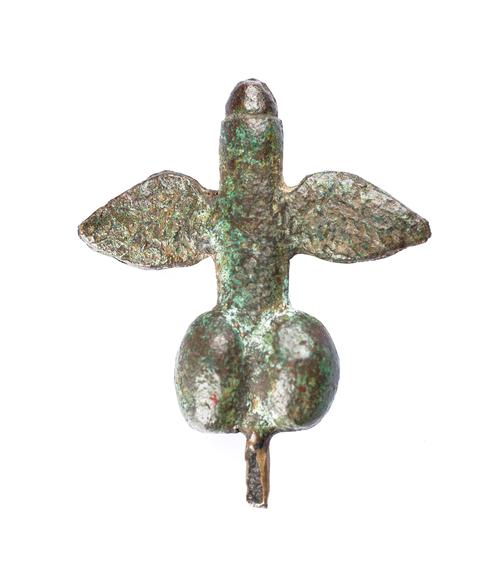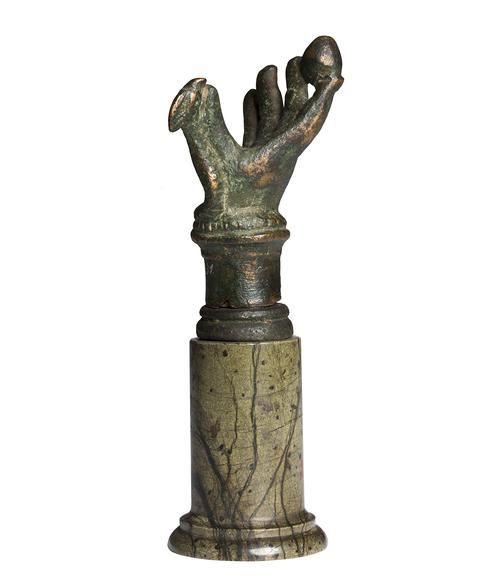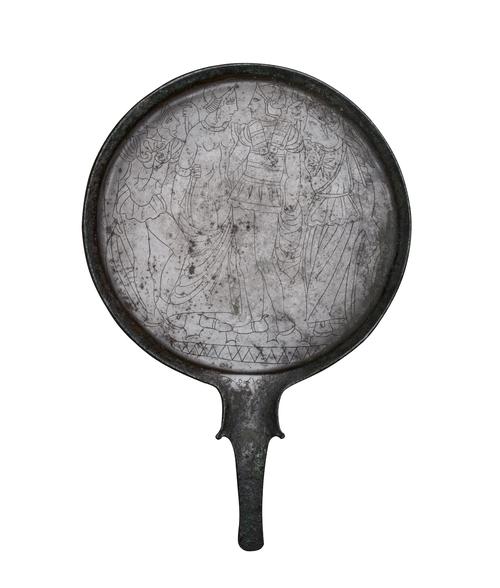
Winged phallic amulet
Bronze, Roman © Freud Museum London
During Dalí’s military service (1927-8) he became friends with a young soldier. Dalí had introduced him to surrealist writings and the soldier had proved extraordinarily responsive, filling sheets and sheets with drawings “of incomparable suggestiveness”. One day sitting together in a café the soldier had suddenly exclaimed “There is a flying phallus!” and proceeded to draw one on the marble table top. “Imagine my astonishment,” Dalí wrote, “given that he could not have known the existence of the Winged Phallus of ancient civilisations, about which I later read in Freud.”

Figure of hand holding an egg
Bronze, Roman, 1st/2nd century AD © Freud Museum London
Freud owned this small Roman sculpture of an upright hand holding an egg, with a snake twining up it. While Dalí would not have known this object from Freud’s own collection, he may have seen similar classical sculptures. The hand in itself had been a recurrent motif for Dalí, while the motif of the hand holding an egg, unique in Dalí’s painting, has a long tradition.

Mirror engraved with figures
Bronze, Etruscan, 350BC - 250BC © Freud Museum London
Etruscan mirrors were often decorated in scenes involving the goddess of love. This was Turan in Etruscan mythology, whose Greek equivalent was Aphrodite and Roman equivalent, Venus. The verso of these mirrors was of course undecorated and highly polished to reflect the image of its owner.